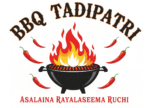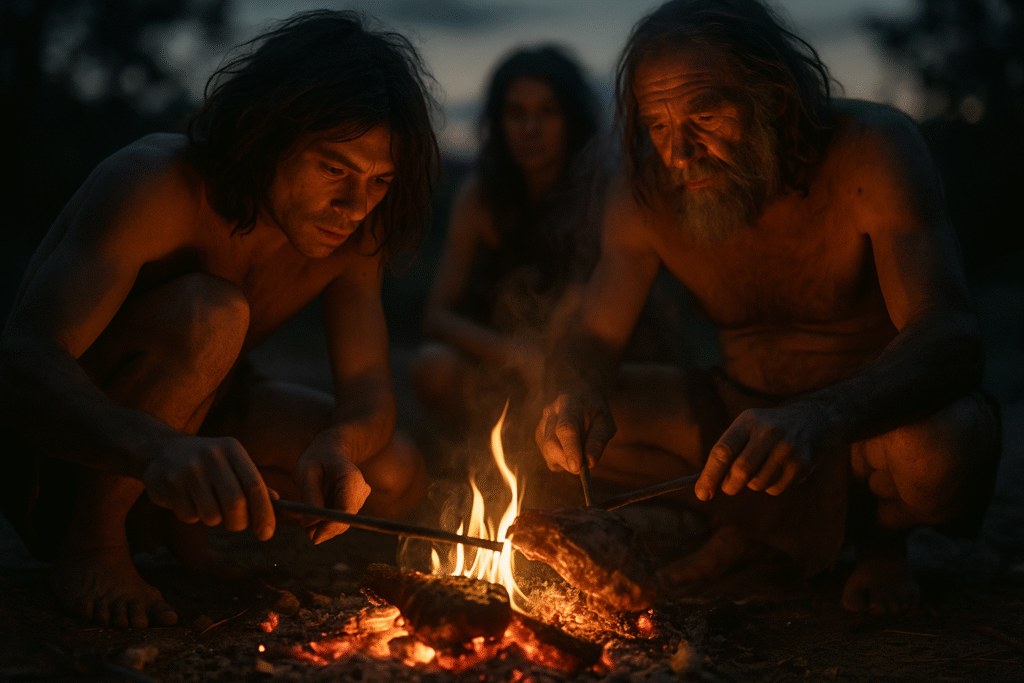Evolution of BBQ is older than recipes and younger than fire. From our earliest campfires to today’s sizzling table-grills in bustling cities, barbecue has stayed the world’s favorite way to turn gatherings into celebrations. This guide traces how BBQ evolved across continents—and how BBQ Tadipatri, Hyderabad carries that story forward with a Rayalaseema twist.
What do we really mean by “BBQ”?
“Barbecue” is a big tent. Depending on where you stand, it might mean low-and-slow smoking over hardwood (American South), open-flame grilling (Latin America, Africa), skewers and marinades (Middle East, India), or table-top grills (Korea, modern India). Three ideas unite them:
- Live fire or embers (wood/charcoal/gas).
- Flavor by contact (smoke, char, fat drip, spice rubs).
- Community—it’s food designed for sharing.
A quick world Evolution of BBQ
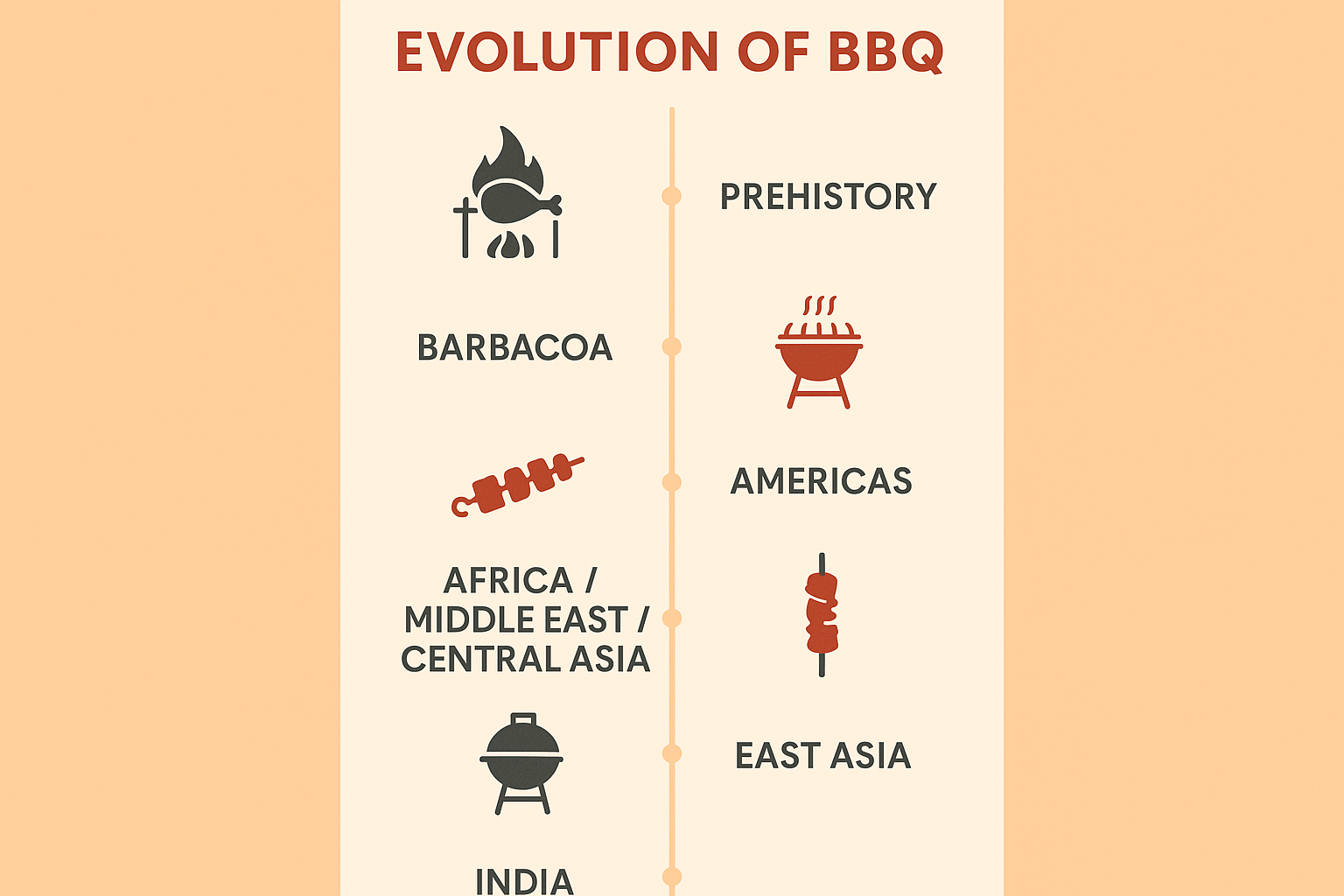
1) Prehistory: Fire, meat, and community
Once humans mastered fire, cooking over embers became survival—and then culture. Early “BBQ” was simply meat on sticks or stones over coals. The results—tenderness, safety, and smoky flavor—stayed irresistible.
2) Caribbean roots: “Barbacoa”
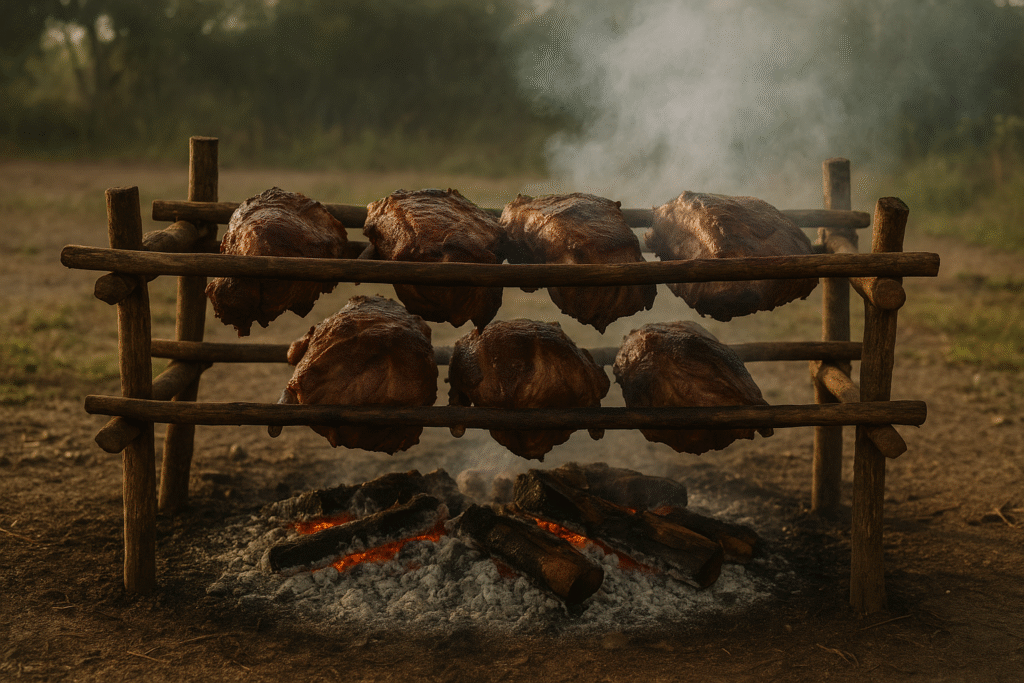
The word barbacoa is widely linked to Indigenous Caribbean/Taíno methods: meat set on wooden racks above a low fire to cook and smoke slowly. Explorers carried the term into European languages, and “barbecue” spread as both technique and party.
3) Americas: Regional identities
As techniques met new ingredients, the Americas created distinct BBQ dialects:
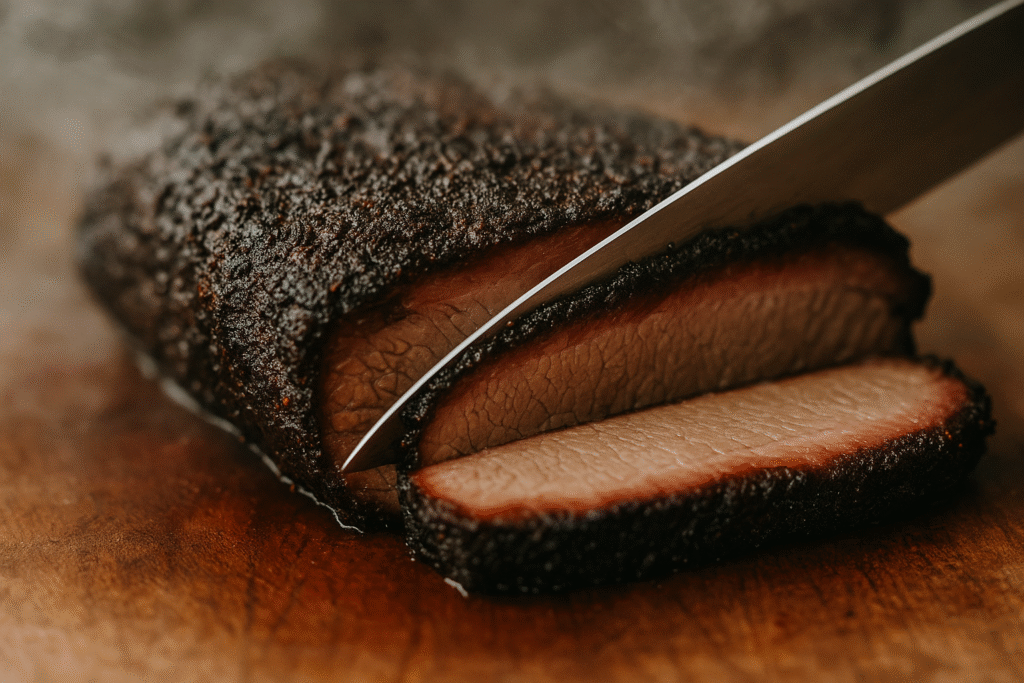
- Carolina: Whole hog or pork shoulder, vinegar or mustard sauces.
- Texas: Beef brisket and ribs; post-oak smoke, salt-pepper rubs.
- Memphis: Pork ribs, dry rubs, tangy sauces.
- Kansas City: A bit of everything; sweet, sticky sauces.
- Argentina/Uruguay (Asado): Open grills (parrillas) with beef and chimichurri.
- Brazil (Churrasco): Skewered cuts carved tableside, rock salt seasoning.
4) Africa, Middle East & Central Asia: Fire and spice
- South Africa (Braai): Open wood fire, social ritual, boerewors, steaks.
- West Africa (Suya): Skewers dusted with peanut-chilli spice.
- Levant/Turkey (Shish/Adana/Doner; Ocakbaşı): Minced and whole cuts, smoky grills and flatbreads.
- Central Asia: Skewers on mangal; cumin-forward rubs.
5) East & Southeast Asia: Grill at the table
- Korea (Gogigui): Table-top charcoal/gas grills, thin cuts, marinades, banchan.
- Japan (Yakitori/Yakiniku): Skewers or thin slices over binchotan; tare sauces.
- China (Chuan’r): Cumin-chilli skewers—street-grill culture.
6) South Asia & India: Ancient tandoor, modern live-grill
India’s grilling heritage runs deep—tandoor ovens, kebabs, and sigri cooking. In recent years, India embraced the table-grill/buffet model: skewers arrive fast, guests grill to preference, and unlimited starters + dessert turn meals into celebrations. Hyderabad’s spice-friendly palate and love of gatherings make BBQ a natural fit.
The technology that shaped Evolution of BBQ
Fuel: Hardwood embers → charcoal briquettes → gas/infrared → pellet smokers (precise smoke).
Heat management: From instinct to thermometers, vents, water pans, and controlled airflow.
Flavor building:
- Rubs & marinades: Salt, pepper, chilli, cumin, coriander, garlic, ginger; herb mixes by region.
- Smoke woods: Oak, hickory, apple, cherry, mesquite—each adds a signature aroma.
- Finishing: Sauces (sweet/tangy/sour/fiery), ghee/butter bastes, lemon squeezes, herb oils.
Modern twist: Chefs now pair sous-vide tenderness with a live-fire finish for perfect texture and smoke.
From backyard pits to restaurant theatre
For centuries, BBQ was outdoor and communal—villages, ranches, picnic grounds. As cities grew, BBQ moved into restaurants and smokehouses, then into experience-driven formats: open kitchens, live counters, and finally table-grill buffets where the theatre is on your table. India’s dining culture—big families, office teams, birthdays—made live-grill buffets explode in popularity: predictable pricing, fast starters, and endless variety.
BBQ styles at a glance (handy table)
| Region/Style | Heat Source | Hallmark Flavors | Typical Cuts |
|---|---|---|---|
| Barbacoa (Caribbean/Mexico) | Wood/emb ers, pit/steam | Gentle smoke, earthy | Goat, beef head, lamb |
| Carolina (US) | Hardwood/charcoal | Vinegar/mustard sauces | Pork shoulder/whole hog |
| Texas (US) | Post-oak/mesquite | Salt-pepper rub, deep smoke | Brisket, ribs, sausage |
| Memphis (US) | Hardwood | Dry rubs, tangy glaze | Pork ribs, shoulder |
| Asado (Argentina/Uruguay) | Wood/charcoal parrilla | Minimal marinade, chimichurri | Beef short ribs, chorizo |
| Churrasco (Brazil) | Charcoal rotisserie | Rock salt, tableside carving | Picanha, fraldinha |
| Braai (South Africa) | Wood | Flame-kissed, social ritual | Boerewors, chops, steaks |
| K-BBQ (Korea) | Table gas/charcoal | Soy-garlic marinades, banchan | Short rib, pork belly |
| Yakitori/Yakiniku (Japan) | Binchotan | Tare glaze or salt | Chicken skewers, thin beef |
| Indian Tandoor/Grill | Charcoal tandoor/sigri | Yogurt-spice marinades, ghee | Chicken tikka, paneer, fish |
Where BBQ Tadipatri fits in the evolution of BBQ story
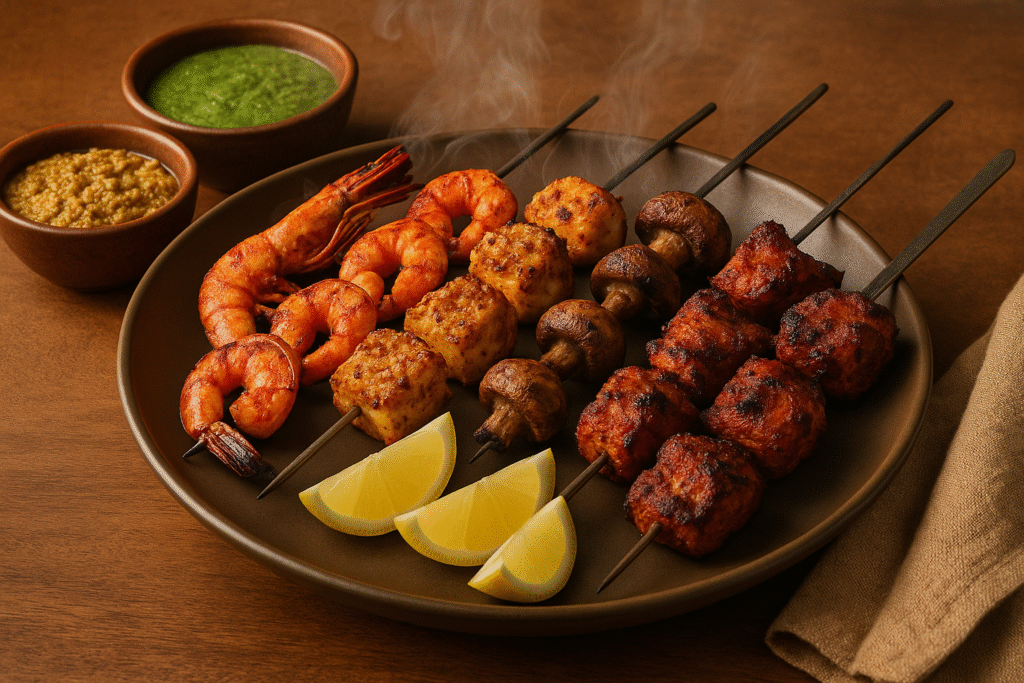
At BBQ Tadipatri, Hyderabad, we honour barbecue’s past and today’s dining habits:
- Live-grill at your table: The theatre of fire where you control the char.
- Unlimited starters: Rotating veg & non-veg so every visit feels fresh.
- Rayalaseema marinades: Local character, not generic buffet flavours.
- Fast start, predictable price: Perfect for birthdays, office teams, and families.
- Comfort for all: Mains, breads/rice, salads, and desserts to balance the heat.
Conclusion: From ancient embers to your table
The evolution of BBQ is really the story of people gathering around heat, flavor, and celebration. From Caribbean barbacoa to American smokehouses, from tandoor ovens to Hyderabad’s live-grill buffets, the heart of barbecue hasn’t changed: fire brings us together. If you want to experience that history in a single meal—with Rayalaseema flavors and Hyderabad energy—pull up a chair at BBQ Tadipatri.
